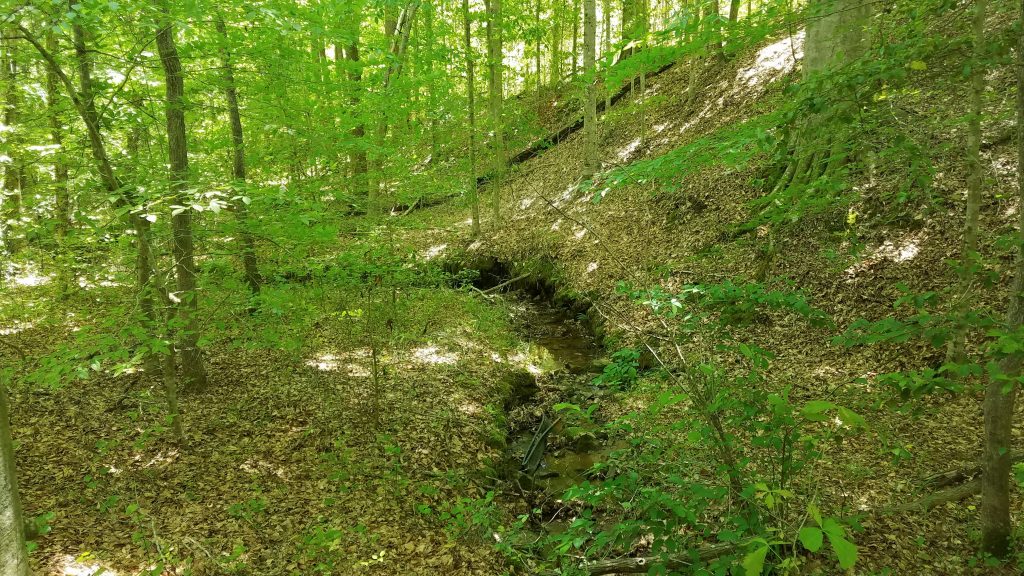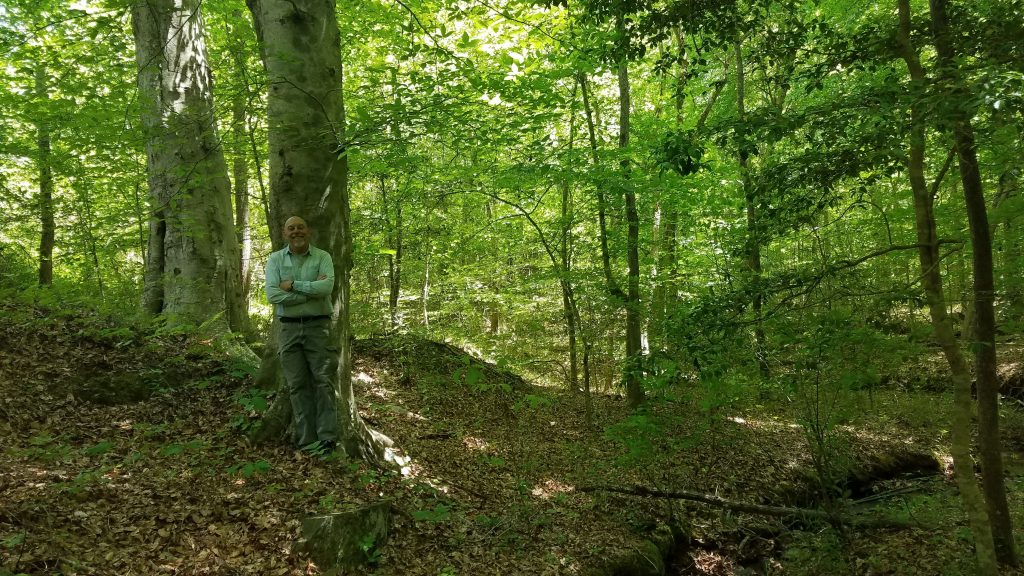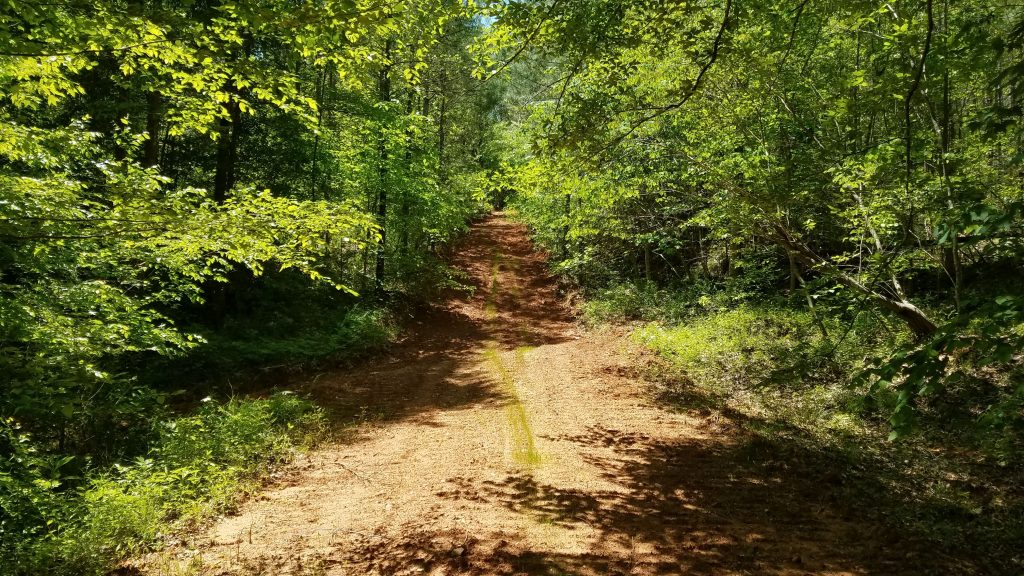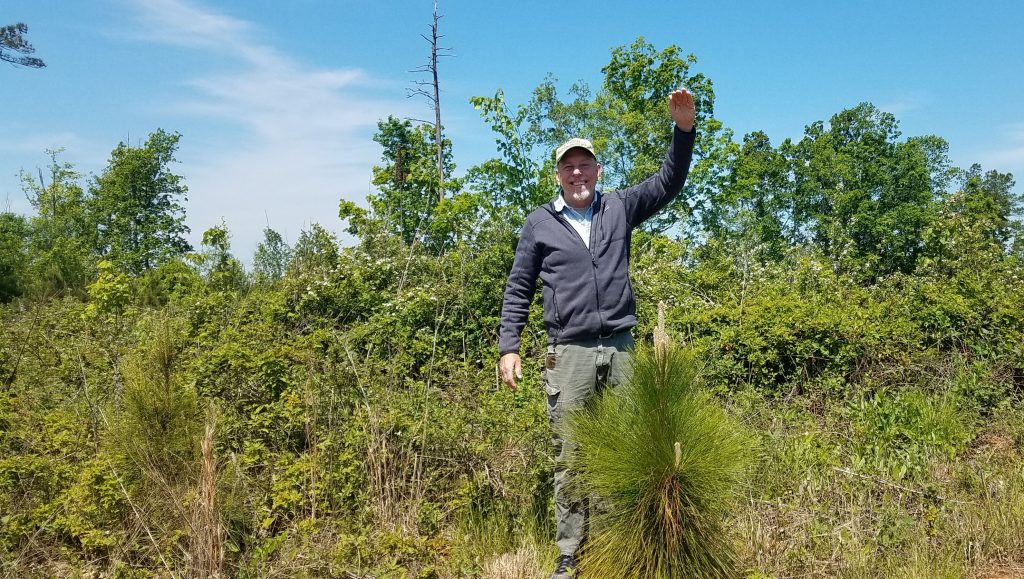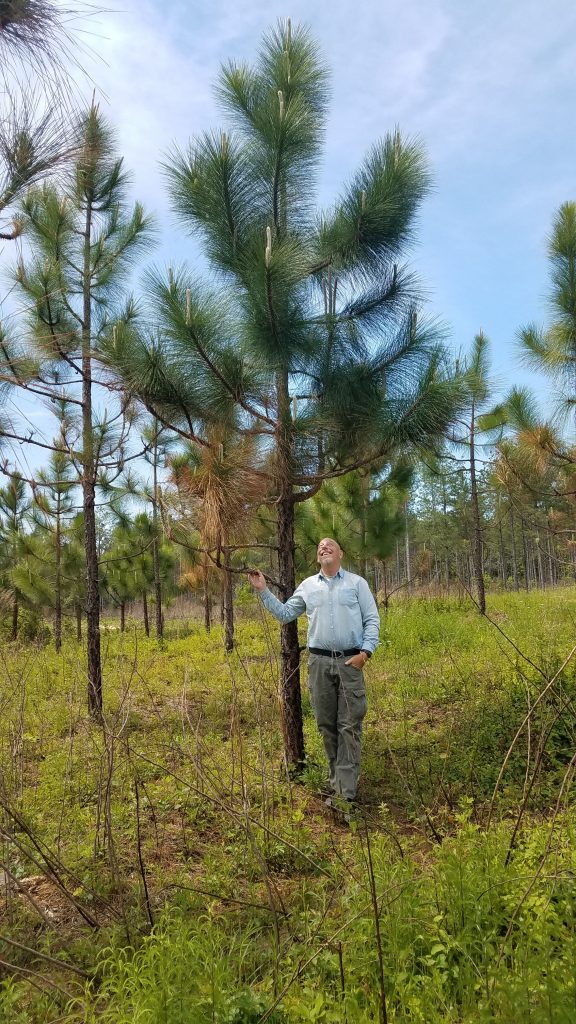
Chrissy came along to our socially isolated farms, so I have pictures that are not selfies to give perspective to my trees.
Rocket stage
First is a longleaf from the generation planted 2016, which means it is going into its fourth growing season. This one is through the grass stage and I think will do the rocket stage this year. My guess is that it will be a bit taller than I am before the end of August. My picture shows my estimate. I will be back to see how it did.
Trees die; the forest abides.
Next picture is from our beechwood SMZ on Diamond Grove. I am very fond of the beech trees, even if they have no commercial value. Those two trees are mostly hollow. They were damaged by a fire probably about twenty-five years ago. It burned off the bark on the uphill side. The wounds mostly healed, but they let in the decay. Hollow trees can be good for wildlife. I think these trees will probably outlive me. If one or more of them blows down before then, I will be sad, but there are plenty of successor trees ready to take their places.
Whiskey and oaks
I did not take a picture, but I found dozens of young-mature white oak on Brodnax. This is very encouraging, since I have devoted about twenty-five acres to oak regen. I was inspired by the “White Oak Initiative” that seeks to grow the next generation of white oak.
All bourbon barrels must by law be made from new white oak. When you taste your favorite bourbon, remember that all of the color and most of the taste comes from the good oak. Fifty years from now, maybe some bourbon drinker will be tasting the flavor of the forests we are growing today.
Longleaf pine of the Virginia piedmont
Last picture is my 2012 generation longleaf. These trees are going into their eight growing season and they look like they are doing fine. We burned under these trees last season and in 2017 (February). We also burned for site preparation, so you can say this was burned two or three times, depending on how you want to count.
We lost some longleaf to brambles. Lesson learned is that you have to control brambles if you want longleaf. Brambles are NOT well controlled by fire, at least not in my experience. You have to go after them with cutters and/or trample them down. The bottom line is that a bramble patch will kill grass stage and bottle brush longleaf. Don’t let them.
Brambles are no longer threats to these trees. I still am cutting some brambles so that I can get into the woods. I do not like brambles, but I recognize that bobwhite quail do, so leave some brambles, but not where you want longleaf.

